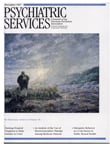George De Leon, the editor of this book, is a highly regarded researcher in the field of addiction treatment. He was president of the American Psychological Association's division on addictions and received the 1993 National Institute on Drug Abuse (NIDA) Pacesetter Award. He is director of the Center for Therapeutic Community Research and has numerous publications addressing scientific treatment and policy issues related to substance abuse.
Dr. De Leon's achievement in bringing together this collection of papers is impressive and will further clinicians' interest in the treatment modality of the therapeutic community. However, given the nature of the book, which is a collection of research studies, the more likely readers will be staff in agencies seeking to develop their own programs for substance abuse treatment.
The traditional therapeutic community model of addiction treatment has been shown repeatedly to be efficacious. In this model, all populations with substance abuse problems are given the same treatment: long-term residential community living of 18 to 24 months. De Leon states that the "quintessential element" of the therapeutic community approach is "community as method."
Much has been written about this model, and the purpose of this book is not to repeat this literature. However, the editor introduces the reader to the highlights of the traditional model first so that deviations from the model in the succeeding chapters can be better appreciated. He states that the evaluation of modified therapeutic communities must include the range and extent to which the programs have retained the basic elements of the model so that the "active therapeutic ingredients" can be identified; identification of these ingredients is especially relevant for modified therapeutic communities, he says. De Leon points out that not all residential or nonresidential programs labeled as modified therapeutic communities meet what he considers to be the criteria for them.
Each of the subsections of the book deals with a specific focus of the modified therapeutic community: mental health and human services; criminal justice; women, children, and adolescents; and short-term residential and day treatment models. The papers in each of these sections describe, often in lengthy detail, the experimental design and outcomes. Because many of the studies were ongoing when this book was compiled, only preliminary results are cited. Of the 15 studies presented, some appear quite well designed and thought out, while others are not as comprehensive. Seven of the 15 studies were contributed by the Center for Therapeutic Community Research, which is funded by NIDA, and NIDA also funded most of the other studies.
Of particular interest in Community as Method are the chapters on therapeutic communities for women and their children. This population is all too often unable to receive treatment within the traditional therapeutic community model, and the inclusion of experimental designs to treat women and their children is especially helpful. Also, the opening chapter on a modified therapeutic community for homeless mentally ill chemical abusers is significant given the large number of dually diagnosed homeless people who use city shelter programs.
This book will be an excellent acquisition for agencies and clinicians dealing with such difficult-to-treat populations.

